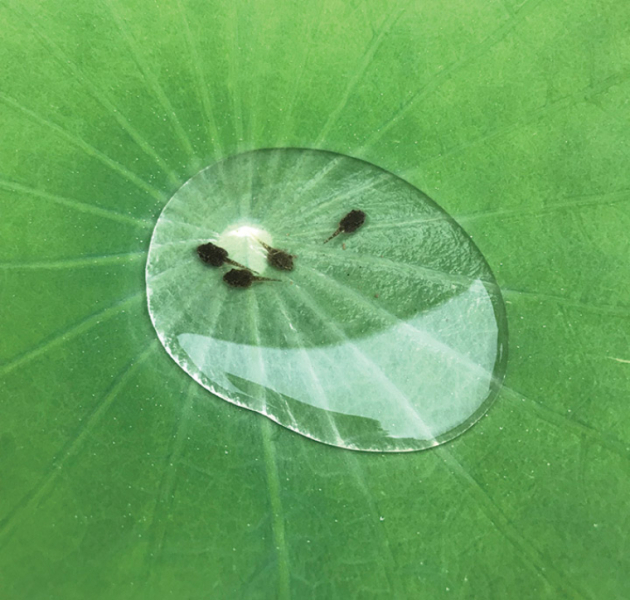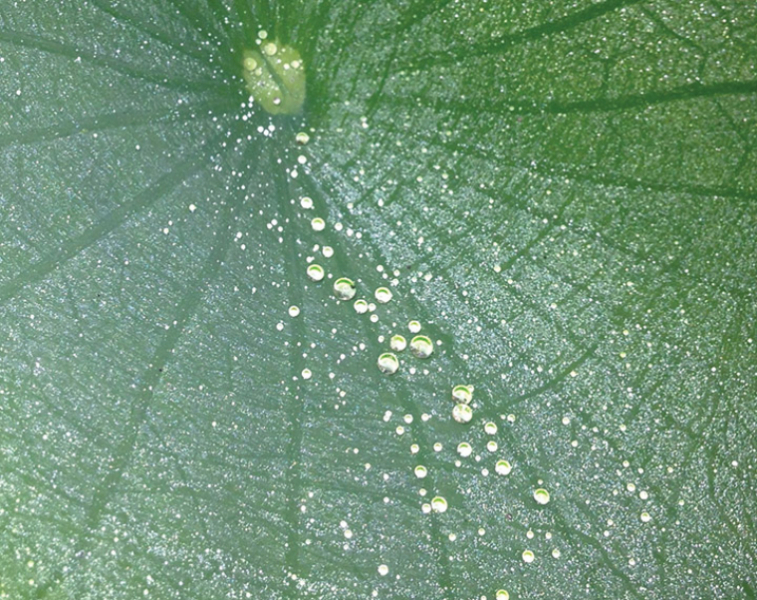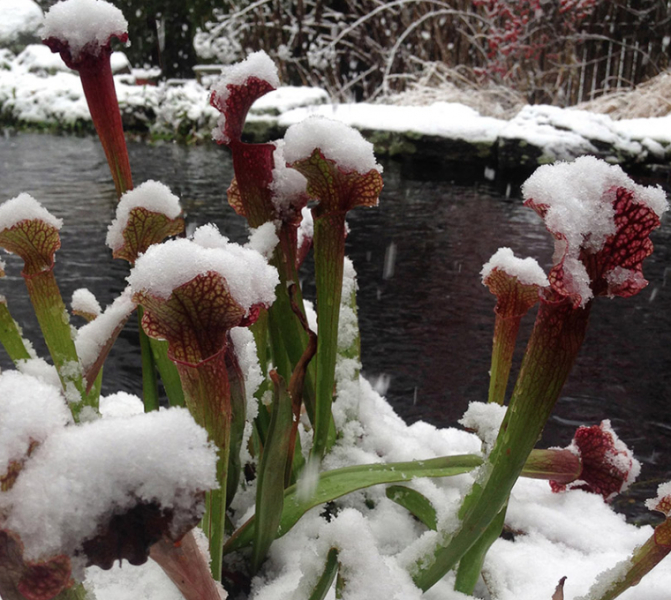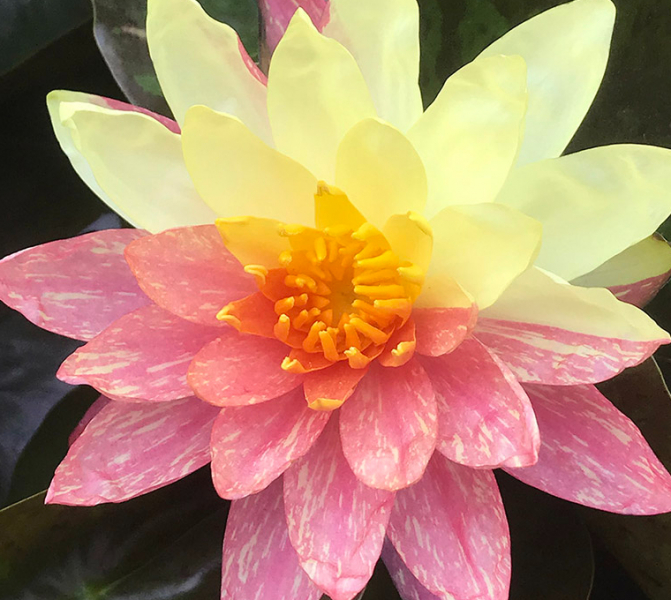
With abundant lotus cultivars (right), flower shapes, colors and even seed pods have new characteristics.
I had the good fortune of spending a majority of my childhood in the forest. My mother was an avid gardener. We lived at the edge of a reservoir that supplied water to Baltimore City. That meant we had miles of fire trails to follow and discover.
Childhood Wonders

There were castle ruins that had belonged to two sisters from England, as the story goes. When clarity allowed, the bridge over the reservoir was an eagle view of a once thriving town under water. A candy and ice cream store were just a couple of miles away through the woods. Swift passage on a banana-seat bicycle made for a great day as long as you were home before the dinner bell with no remnant evidence that you had gone that far.
Our mother had a way about her that made every discovery on the forest floor an event worth remembering. From fallen trees filled with termites to the first sign of May apples, we were indoctrinated on the ways of nature. Plant identification came along the way — partridge berry, crowsfoot, bloodroot, Jack-in-the-Pulpits among the dogwood, oak and redbud, to name a few, came with discussions of where they might prosper in the garden and how to effectively provide for their survival. Failure was often a good teacher, as the only knowledge at that time was what was handed down from previous generations. Google was nonexistent — just Encyclopedia Britannica in our house!
During difficult times in our lives, our mother would point to events we had been witness to that offered hope, renewal and faith that all things would be good in the end, no matter how bad they seemed at the time. Nature was always compensating, adjusting and teaching the realities of living alongside her. Humanity was often explained — death and life, pain and happiness, destruction and renewal and, of course, spring cleaning.
Mother Nature as Teacher
Mother Nature has her own way of reflecting what we do, or we reflect her. One good storm could clean the dead wood out of the forest in a few hours, providing nurture for the insects, fungi and bacteria along with safe harbor among the fallen brush and branches for small mammals and birds. What served a purpose yesterday may serve a new one today or tomorrow. Storms always pass, and the sky clears to be blue again. Her infinite wisdom was priceless.
Wisdom of the Wild
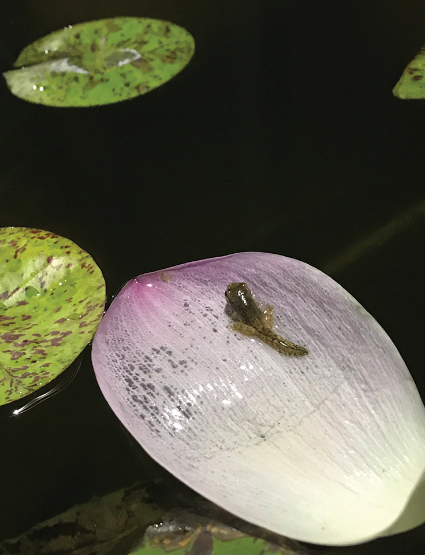
We grew to learn that we could find answers from nature, and storytelling was an integral part of how to approach and understand the world. Plants have stories. Knowing and sharing them was of value. My grandfather was of few words, but I learned early that there were no crappie to be caught in the Susquehanna River if the dogwoods had finished blooming, and no shad if the shad bushes (serviceberry) were spent. Skunk cabbage announces the coming of spring. Nature’s ability to predict things wasn’t dependent on a date on the calendar. She knew the schedule on her own clock, always adjusting and shifting to accommodate the cyclical changes. If you were paying attention, she was talking to you, too.
I was blessed to have many mentors who furthered the value of plants in the landscape. Kurt Bluemel was among the first. He became known as “The King of Grasses” but not without investing himself wholeheartedly. Grasses were not used in the American landscape when he came to this country. By his own observations, he learned the importance of sound and movement in the landscape. Grasses provided both. Round bushes planted along the foundation of a home did little to attract attention, but they were common in front of most homes at that time. In a time when most homeowners wanted flowering plants to replace the bushes, ornamental grasses were a hard sell. Many things led to his success, but most important was his ability to see what others did not and teach it passionately.
Every Plant has a Piece of Romanticism
He once told me that every plant has a piece of romanticism. When you find it, you will be able to market that plant. It may be the way the sun comes through the foliage at dawn and illuminates the leaves, or the way the color changes as the sun moves around it throughout the day. Sometimes it was how the dew settled on the tips of the hairs that line the leaf stem after a foggy night. Other times it would be the rustling of the dried leaves in late fall that gently kept you company on a breezy afternoon. He saw those things and capitalized on them, forever changing the way garden plants were utilized together.
A Purpose for Every Plant

Truly learning a plant presented an opportunity to know how to use it in the landscape in the most effective way. Visual interest is to be capitalized on year-round. Trees or vines with interesting bark should be placed outside a window to set a framework and add structure to the winter landscape. Plants with curious dried stems and seed pods should be intentionally massed alongside them to collect snow for added appeal.
Each season should have an event to look forward to — not just in flowers, but in a story. Bulbs that emerge as the winter snow melts tell us that spring is coming. Fragrant plants, whose flowers may not be obvious, should peak in spring or fall when their sweet smell is most likely to coincide with the windows being open or when outdoor activities would be ongoing. Summer is hot and requires an element of surprise while the rest of the plants are slowing down and growing weary.
In gardening and in the landscape, the learning does not end. It mutates much like nature. As wisdom is collected, the plant combinations and likely partners are paired sometimes intentionally; other times, nature decides. Plants will take up residence in the garden where they want to be by migrating around on their own. Often a good, healthy garden invites wildlife, and they often bring gifts of seeds and other wanted and unwanted guests. The garden will also be a place of safe harbor for its inhabitants. The beauty of mutation is part of the game.
Education Continues
When I began my water gardening career, it was very accidental; however, I had a sound foundation of inspiration. Aquatic plants became my focus, because we always had a small pond, and all these new and exciting plants fueled my curiosity. Since a school for water plants was nonexistent, it was a learn-on-your-own endeavor.
Anthony Archer-Wills was my light-bulb moment! His unwavering love of water and its inhabitants was so inspirational I got hooked. He is the master of design, reflection and replicating nature in every detail. His understanding of the natural world and stories are why I’m here.
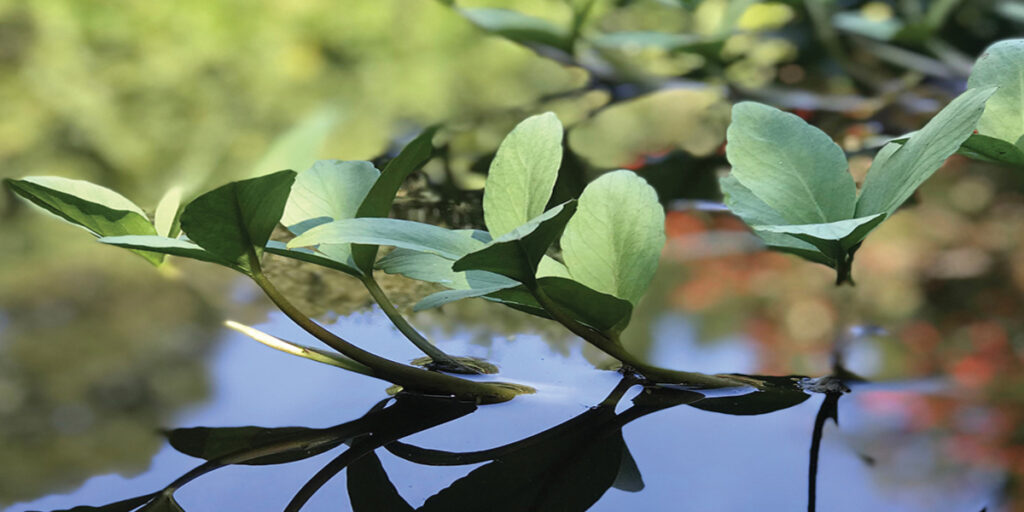
Patrick Nutt from Longwood Gardens taught about soils and fertilizers. Rolf Nelson from Nelson Water Gardens understood pests and disease. Ken Landon from the International Waterlily Collection provided extra lilies here and there that were on an ever-growing wish list. Letters, visits and phone calls went back and forth among the water garden community. The International Waterlily and Water Gardening Society (IWGS) had Walter Pagels, the organization’s librarian who was committed to sharing his experiences, knowledge and occasional plants he had acquired from around the world. Photocopies of individual plant profiles fulfilled an unwavering thirst for aquatic plant knowledge. These are but a few of the influential contributors that shared their own visions, perspectives and understandings.
Mentors are the storytellers who inspire the next generation. The collective knowledge of knowing plants throughout their lifetime is what transfers to the next animate mind. Decades of observation, experimentation, success and failures can’t be replicated by a machine or a program — at least not yet.
So, be sure you are listening!

